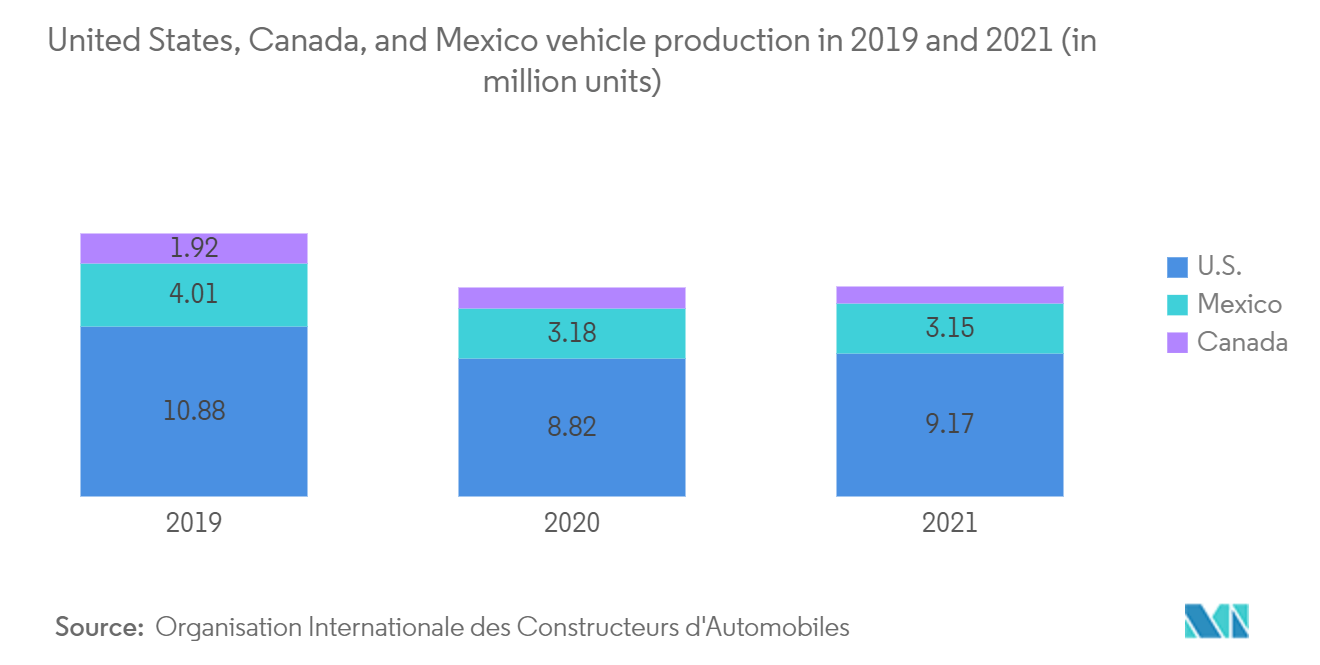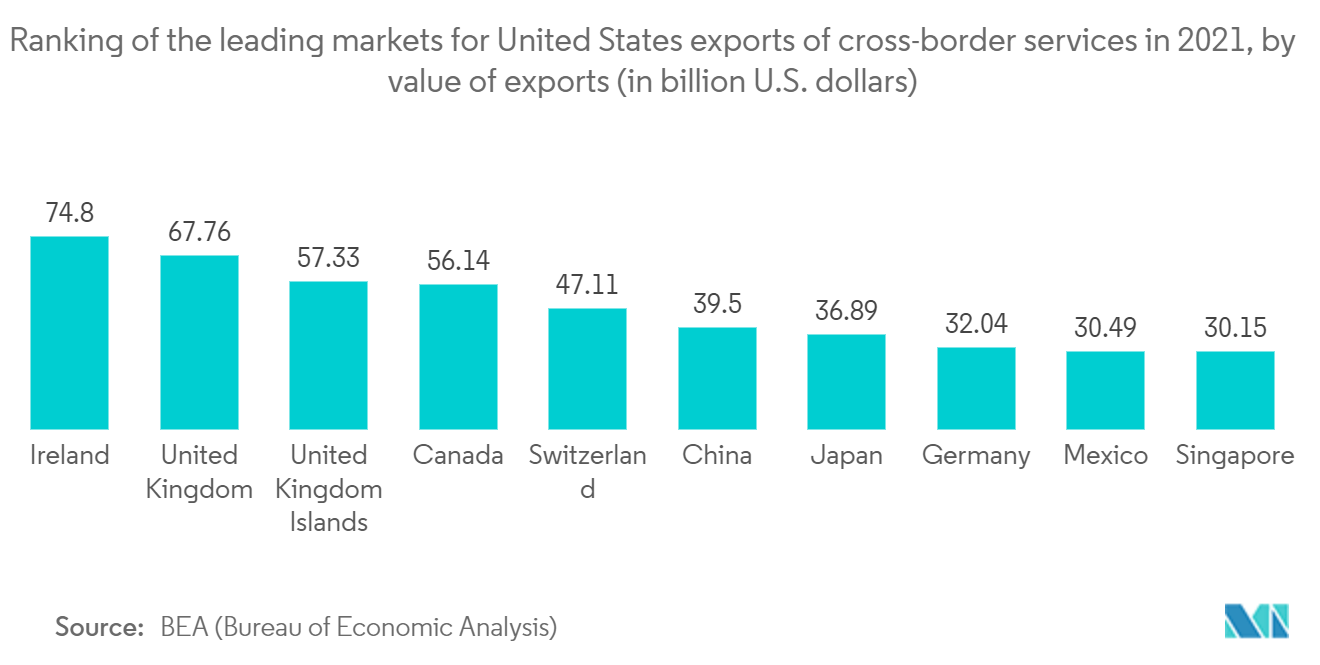Market Trends of North America Long-haul Transport Industry
This section covers the major market trends shaping the North America Long-haul Transport Market according to our research experts:
Growing Automotive Market in the Region
The increasing focus on reducing vehicular emissions has shifted the focus of the automotive industry toward electric vehicles, which is driving the automotive market. With growing environmental concerns, governments and environmental agencies are enacting stringent emission norms and laws that may increase the manufacturing cost of electric drive trains and fuel-efficient diesel engines in the coming years.
The new United States-Mexico-Canada Agreement (USMCA) is one development that may bring both challenges and opportunities for American carmakers and their global supply chains.
While NAFTA originally required automakers to use 62.5% of North American-made parts in their cars to be imported duty-free, the new agreement aims to gradually raise the bar to 75% by 2023, which may incentivize automakers to increase the number of North American-made parts that they use in their cars and light trucks.
The USMCA also mandates that automakers manufacture 40% of their motor vehicles in facilities where assembly workers earn at least USD 16 an hour. While average wages are even higher than those for auto assembly workers in Canada and the United States, they are not in Mexico. In recent years, several US automakers have shifted production to Mexico, in order to take advantage of the lower labor wages.
The role of incentives and mandates is key for the high demand for electric vehicles. The governments are providing several incentives to encourage the sales of electric vehicles, as all these countries are focusing on reducing their vehicle emissions.
In the United States, the EPA and NHTSA have proposed implementing the Safer Affordable Fuel-Efficient (SAFE) Vehicles rule from 2021 to 2026. The rule may set the standards for corporate average fuel economy and greenhouse gas emissions for passenger and light commercial vehicles. In addition, the Zero-emission Vehicles (ZEV) Program requires OEMs to sell specific numbers of clean and zero-emission vehicles (electric, hybrid, and fuel cell-powered commercial and passenger vehicles). The ZEV Program aims at putting 12 million ZEVs on the road by 2030.
However, the COVID-19 pandemic across the world and the implementation of the United States-Mexico-Canada (USMCA) trade agreement in 2020 remain a few crucial factors that are likely to hinder the market growth in the coming years. Among the countries in the region, Mexico has emerged as one of the largest auto manufacturing hubs, as automakers from the United States have established their production facilities there, owing to the many incentives offered by Mexico, such as low production costs and tariffs.

Growing Cross-border Trades from the United States
More than 50% of freight to North America from the United States is carried by trucks.
The freight demand is expected to increase in the future. Thus, the total weight of shipments transported domestically, by all modes, is expected to reach 20,940 million metric tons by 2045, out of which 14,235 million metric tons may be transported by trucks.
Canada and the United States have one of the world's greatest commercial ties, with over USD 1 trillion in bilateral commerce in products and services in 2021. Canada was the United States' greatest trading partner in goods and services that year. Long-standing bi-national supply chains underpin Canada-US commerce, with around 79% of Canadian commodities exports to the US absorbed into US supply chains.
Border crossings are potential bottlenecks in the freight transportation network. The Federal Highway Administration monitors truck crossing times at 15 designated truck lanes at the US-Canada border crossings. The US Department of Transportation, in partnership with the Texas Department of Transportation, also measures transit times from Mexico to the United States at the Bridge of the Americas and the Pharr-Reynosa International Bridge.

